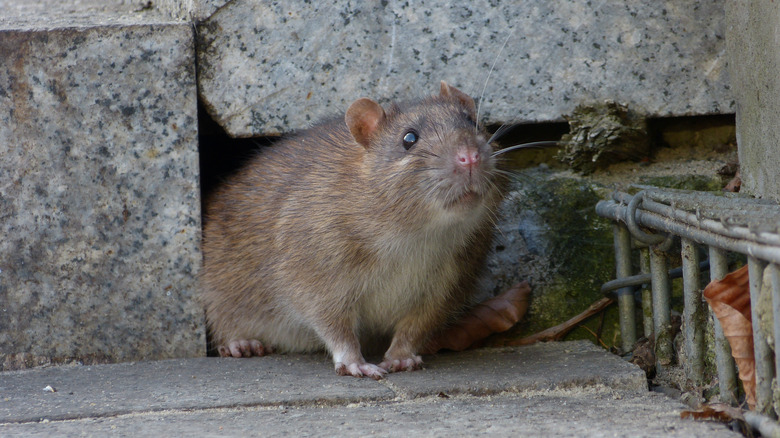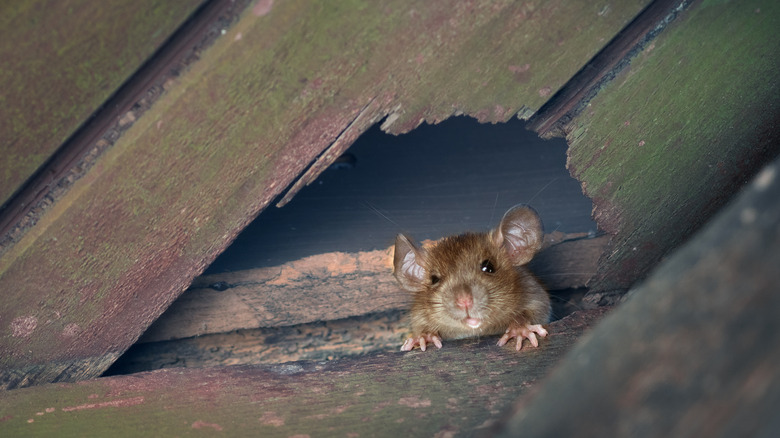The Messed Up Truth Of Rats In New York City
As with any bustling 21st-century metropolis, New York City isn't always the glamorous haven that visitors might think. Issues such as overcrowding and high costs of living aren't exactly unknown in The Big Apple. According to Living Cost, in fact, it's the second-most expensive city to call home in the United States, and in the top 1% on a global basis.
Then there are the alligators in the sewers ... except there aren't really. As John T. Flaherty of the sewer bureau told The New York Times back in 1982 (per Live Science), "the sewer system is not a fit habitat for an alligator ... neither I nor any of the thousands of men who have worked to build, maintain or repair the sewer system has ever seen one."
Another almost-legendary pest problem faced by New Yorkers isn't just an urban legend, however. Here's the shocking story of the city's many, many rats.
DNA Info explains that the Health Department organizes free "Rat Academy" classes, which last from hours to several days, teaching residents and building managers how to manage their rat situation. This "really is a solution," reported Caroline Bragdon of NYC's Department of Health, affectionately known as The Rat Czar.
The Other New Yorkers
As explained by Business Insider, it's sometimes been said that there are over eight million rats in the city (the same as the human population), but David E. Davis' "The Rat Population Of New York, 1949" (via Oxford Academic/American Journal Of Epidemiology) deemed this number an example of the "absurd estimates ... [which] have become commonplace." A 2014 study, per Business Insider, put the total at around two million.
This number, reportedly, was the result of researchers monitoring areas where rats are sighted and drawing conclusions based on what is suspected about the distinct and highly territorial groups. However many there are exactly, though, rats are a part of big city life. The rats that are dominant in NYC are brown rats, Rattus norvegicus. Though they don't tend to spread disease between each other, though, the potential for passing on diseases such as the bubonic plague remains.
As these critters are so secretive and can thrive underground, there's no telling for sure just how many of them live in New York City. As Business Insider concludes, though, it's humanity that has created the perfect conditions for them to thrive, and they'll never be far away from us.

